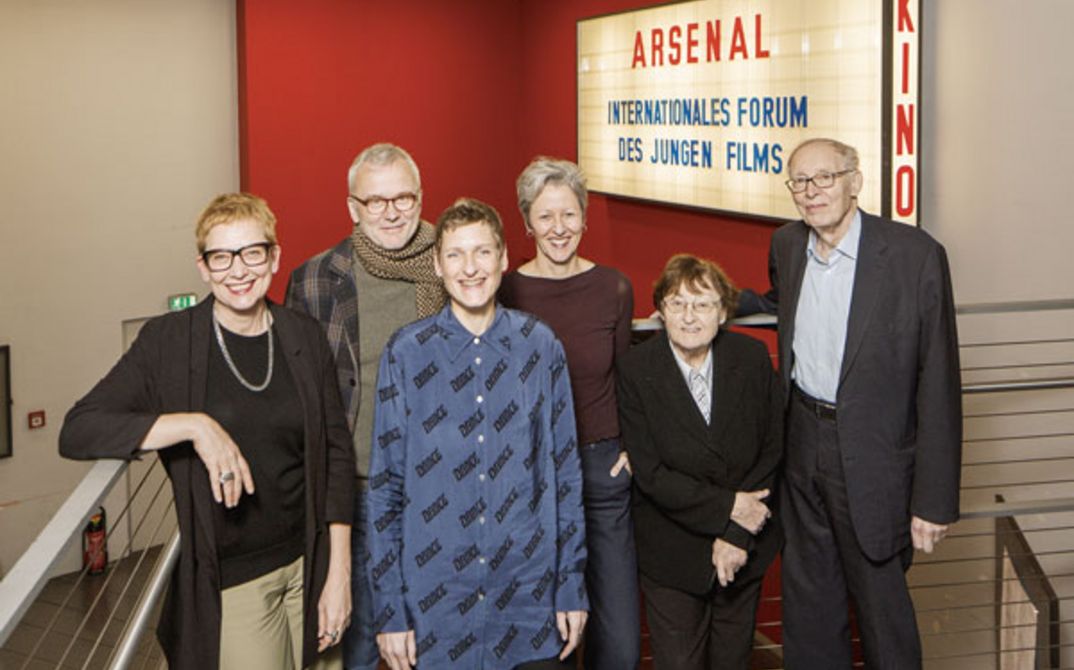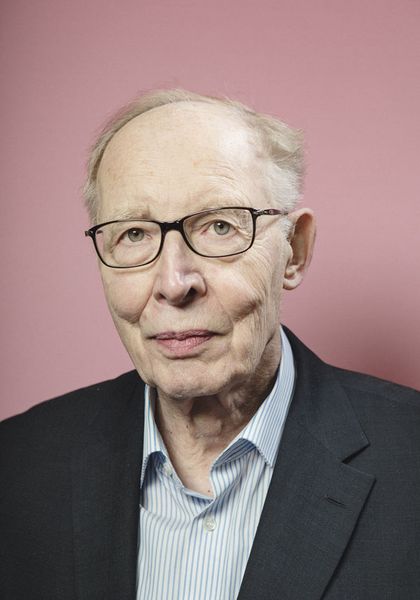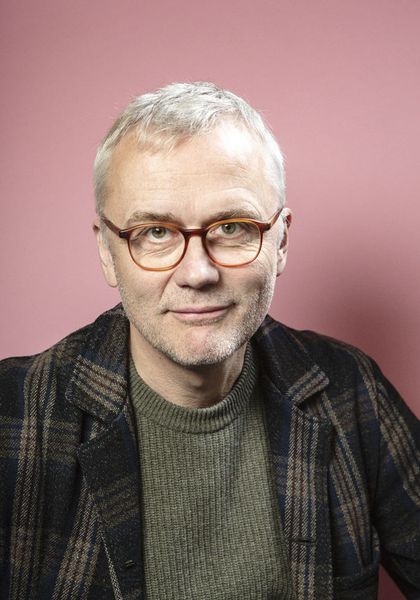One of the most important years must have been 2001, when the Berlinale moved to Potsdamer Platz, where Arsenal has also been located since 2000. And Dieter Kosslick’s tenure as director of the festival started, just as Christoph Terhechte became the new head of the Forum.
SSS: 2001 was obviously important, but the period of change actually lasted until 2004, when the Federal Government took over responsibility for Arsenal from the Berlin Senate.
UG: After Kosslick replaced Moritz de Hadeln, the climate totally changed. Before that, there was a rivalry between the Berlinale and the Forum. Everyone was watching each other like a hawk, but it was a productive atmosphere and a big motivation for everyone we worked with. The energy we employed looking for films doubled as a result.
CT: Another part of the story is that there were already plans for a Filmhaus before 1989, which was supposed to be located right next to the wall. That then had to be integrated into the new plans. In 1998, de Hadeln’s contract was extended unexpectedly. I was already the designated head of the Forum, I was actually supposed to start in 1999. Ulrich und Erika Gregor, who’d asked me to take over, then decided: ok, then we’ll also stay on for another three years. When I finally started working, Ulrich Gregor had already stepped down from his position as co-director of the Berlinale, and I had to come to some new arrangement with Kosslick.
Did it become more difficult for the Forum to differentiate itself from the rest of the festival? Panorama had also been founded in 1986 as a new section of the festival by Manfred Salzgeber, who also originally came from the Forum.
CT: As far as content was concerned, I didn’t have any problems with the new set-up under Kosslick, who expressly wanted to bury the hatchet with me – we’d previously fallen out in a different context, back in Hamburg. Moritz de Hadeln and Ulrich Gregor still very much knew how to swing the hatchet. LES AMANTS DU PONT-NEUF (1991) by Leos Carax could have also been shown in the Competition, as it was one of the most expensive films of the 80s, but it screened at the Forum and that was the right decision, as it’s not about external criteria, but rather the stance of a film and its cinematic qualities. We first showed Hong Kong films in a midnight programme and later Bollywood films too. The Forum was the first section of an international festival to bring the Indian mainstream to Europe. That was down to Dorothee Wenner. Back then, we used to buy video cassettes on Second Avenue in New York and watch them in the hotel in the evening.
UG: That was a huge shift for us, as alternative Indian auteurs like Mrinal Sen had total contempt for Indian commercial cinema. Dorothee Wenner made a breakthrough there by also getting us interested in those films.
CT: It was also about recognising other qualities in those films rather than their sheer popularity. My first real intervention at the Forum was a quantitative one though: I reduced the size of the programme. Far too many films were being shown. I thought we should show fewer films, with each film screening more frequently.
BK: A very decisive change was the moment when the rule about premieres was introduced at the Forum. It’s a symptom of how the industry functions and creates competition between festivals. Since then, the Forum’s selection has also taken place in a world where the power of the world sales companies gets bigger all the time and the influence of the many pitching sessions and talent markets is constantly growing. That’s the environment in which the Forum and its specific profile must hold its ground these days. And then there’s also the question of how and where films that aren’t pre-formatted can even be found, which is what our focus is, of course.
So world cinema has become a highly integrated part of an entire wider system where it’s difficult to still find aesthetic and political innovations?
CN: We’re now at a point where the Forum has to re-examine the story of its success, as success can easily gallop off again. The Forum was extremely important in establishing Bollywood abroad, but that trend has gone so far in the meantime that Bollywood films are now shown on mainstream television here in Germany. Putting on midnight screenings hardly makes any sense today, as that type of rare, culturally charged cinema doesn’t exist anymore. How and where films are seen and thought about has changed massively. Back in 1971, representatives of the Third Cinema were still very much appearing, expressing radical criticism of the status quo from the perspectives of countries on the periphery of the hegemonic West. This sort of criticism is only seen seldom today, for example, in the work of Lav Diaz or Wang Bing. The zeitgeist is no longer so keyed into this stance of radical criticism. There was a time when such animosity played a bigger role. Today, criticism immediately feeds back into the system so that (and I’m saying this in deliberately broad terms) capitalism works better. Minority positions rapidly become part of the mainstream.
CT: In the meantime, there’s not just the film industry mainstream, there’s also the mainstream among festivals and in the world of film funding bodies. Lav Diaz and Wang Bing work pretty comfortably in their way. I don’t know when the moment came when it hardly became possible to make discoveries anymore because commercial mechanisms were picking up on everything so quickly. de Hadeln rejected one of Aki Kaurismäki’s films and afterwards he only came to the Forum, before returning to the Competition under Kosslick. That was also indicative.
UG: A big director like Hirokazu Kore-eda has no say in how his films are marketed in festivals. His world sales company agrees on everything for him.
The Forum used to be on the fringe of the Berlinale, later Forum Expanded was on the “fringe of the fringe” as it were, but now it’s hardly possible to find such fringe areas any more.
SSS: The Forum showed very radical experimental films from the very beginning. Yet in later years, the field underwent a period of considerable canonisation. Many works started resembling one another. In 2012, during our Think:Film conference, Michael Snow commented that, in retrospect, he felt that several films were derivative of one another. In parallel, film started popping up in the art world more and more, where different contexts and ways of presenting work were pointing to new possibilities. At times, I found that too much of an encroachment, but I also had the impression that something was happening there that I’d been missing in the world of film. A lot of what suddenly arrived from the art world was also submitted to the Forum, but it didn’t really fit the cinema or festival format. We once showed a three-hour video diary by artist Gina Kim, who got really nervous before the premiere because she wasn’t used to showing her work at a cinema and asked me to tell the audience that they could go in and out as they pleased. She was then totally amazed that they didn’t just stay, but also received her work very positively in that cinema context.
CT: That’s an important clarification, as it wasn’t as if avant-garde cinema was supposed to be farmed out somewhere else. Forum Expanded was never supposed to relieve the Forum of the responsibility of showing experimental work. It was also about tapping into new audiences who were familiar with exhibitions and galleries.
BK: Finding the experimental where it’s not already clearly labelled as such – that’s an ambition of the Forum.
SSS: I see it all as a research project, carried by an understanding of our cultural mission to take part in public discourses and initiate them. With the exhibitions that form part of Forum Expanded, it was also about looking at cinema from the outside and challenging the immutability of institutional boundaries.
UG: TEATRO AMAZONAS (1999) by Sharon Lockhardt caused a veritable explosion of feeling in the audience, we found that really interesting, that so much emotion could be generated by an experimental film.
CT: Seeing films without any accompanying labels – that’s the essence of the Forum for me, the idea of having no pre-formulated concept for what you’re going to see. That’s how I experienced the Forum back in the 80s already as a cinemagoer. It went without saying that we entered the auditorium with a totally open mind and only used to read the Forum film notes afterwards.
CN: Back then, I was the film editor at the taz newspaper and experienced again and again that the cinema could be a space terribly lacking in discourse, while the art world is positively brimming with it. There was a big difference there. In Germany, cinema is closely linked to entertainment, you’re not supposed to be made to think.
SSS: In addition, it was always a balancing act for us in that we deal with two very different economies. Just one example: in exhibition catalogues, the names of the artists are listed first, while in festival ones, it’s the film titles.
Today more than ever, the Forum stands in the context of the many different activities being carried out by Arsenal. The Living Archive project is important to mention here, which is about grasping the present in complex fashion by way of its respective historical and territorial components.
SSS: At the start of my time at Arsenal, I was also responsible for distribution and print traffic. The films shown at the Forum circulated for years and you could see what was important at any one time based on what the German arthouse circuit was requesting. Our film collection provides a great representation of this story, the Forum didn’t end with each individual edition of the Berlinale.
CN: This year, we’re showing the entire 1971 edition of the Forum on the occasion of this big birthday. We’re doing it because we think it’s important to make the degree of transfer between 1971 and 2020 clear. It’s a particularly rich exchange because so many things were in vogue back then that are still very acute today. Films that functioned as agents of the anti-colonial struggle back then can enrich current debates about racism and post-colonialism. The same thing applies to feminist films. For example, EINE PRÄMIE FÜR IRENE (A Bonus for Irene) by Helke Sander is astonishing because it seems like light years away on the one hand and extremely close to us on the other. There will continue to be film history at the Forum, that’s important for the programme. I recently re-watched an early film by Angela Schanelec: ICH BIN DEN SOMMER ÜBER IN BERLIN GEBLIEBEN showed at the Forum in 1994. Suddenly you see a Berlin telephone box, with this dirty yellow colour. That is a Berlin that I used to know, it was there at one point, and today it no longer exists. This detail, this image of a telephone box, shows that each status quo always carries an openness within it. A thing is not identical to its image. I understand the political in a similar way. When grappling with film history, you can grasp a fundamental changeability, which also concerns the very medium itself. Watching analogue film can also be about experiencing something different for today’s 18-year-olds. This also applies to the map of world cinema. In the past, people used to scour the world for unknown territories where cinematographic treasures could be picked up and taken home, which had something of a colonialist logic. That’s now over and it’s a good thing, but it doesn’t mean that the search for new entry points to the world should be given up.






